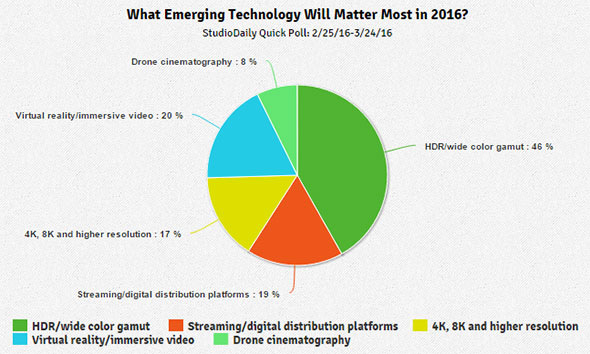In addition to being a ground zero for VR, UHD, HDR, and other evolving media forms and formats, NAB 2016 is looking to be a proving ground for the new, IP-based ATSC 3.0 broadcast standard. It will be a crucial opportunity for ATSC 3.0 advocates to make their case for high-resolution, wide-color-gamut broadcasting to an industry that is, in many cases, still recovering from its massive capital investment in HD infrastructure and the original digital transition.
ATSC 3.0 will be in the spotlight at two different locations representing the two poles of the broadcast process. At the ATSC 3.0 Broadcast Pavilion, part of the Futures Park exhibit near the back of the Upper Level of the South Hall, a full range of next-generation broadcast equipment will be displayed, from audio encoders and watermarking software to multiplexers and transmitters.And at the ATSC 3.0 Consumer Experience, at the entrance to the Upper Level of the South Hall, ATSC 3.0 receivers will be used to tune in live transmissions from the Futures Park as well as to send data via Wi-Fi to tablets and mobile devices.
"ATSC members will demonstrate operational 3.0 hardware, running 3.0 applications on actual 3.0 over-the-air broadcasts," promised ATSC Board Chairman Richard Friedel of Fox Networks in a memo in the latest ATSC newsletter. "Broadcasters will begin placing orders for 3.0 professional equipment, and we'll see actual consumer 3.0 receivers and ancillary equipment … from major consumer electronics brands."
The previous public milestone for ATSC 3.0 came at CES, when 4K HDR broadcasts were demonstrated via local Las Vegas television stations. (See StudioDaily's coverage here.) But at NAB, the goal will be to convince broadcasters that the required new infrastructure is worth the investment. That means showing enough working equipment to convince the industry that 4K is more than a science-fair project for precocious broadcasters, and enough compelling consumer applications that reach beyond the geekiest of early adopters.
"Consumers are hungry for new sources of 4K content, and we expect to see several examples of new product capabilities shown for the first time in the ATSC 3.0 Consumer Experience display," said Consumer Technology Association SVP Jeff Joseph in a prepared statement.
One thing is becoming apparent — HDR is widely seen as much more important to the next generation of digital media than resolution gains alone. In fact, 46% of respondents to a recent StudioDaily Quick Poll cited HDR as the most important emerging technology in 2016, compared to just 17% saying beyond-HD resolutions would be more important. The poll ran on the front page of this website from January 25 to March 24.
